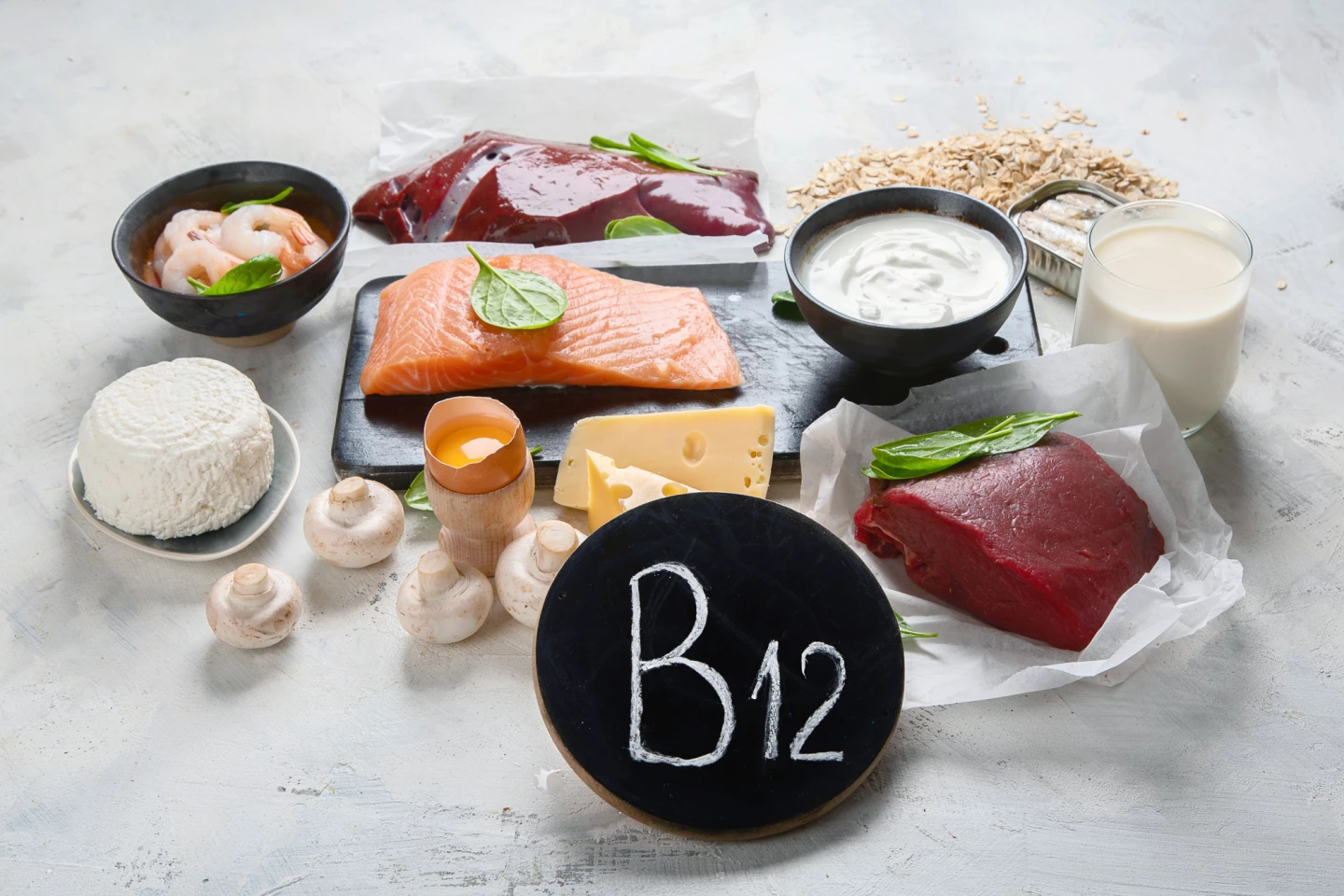People who sit on the low or high side of normal vitamin B12 levels are still at risk of cognitive impairment, according to a new study. The researchers behind the study say we need to rethink the ‘healthy’ range for the vitamin that plays a key role in brain and nerve health.
Vitamin B12, or cobalamin, is crucial in DNA synthesis, red blood cell formation, nervous system health and function, brain health, and energy production. It’s normally obtained through meat, poultry, fish and shellfish, dairy products and eggs. Vegans and vegetarians can obtain B12 from foods fortified with the vitamin.
A new study led by UC San Francisco (UCSF) researchers has examined how seemingly ‘normal’ blood levels of vitamin B12 can still negatively affect brain functioning and structure, especially in older folk.
“Previous studies that defined health amounts of B12 may have missed subtle functional manifestations of high or low levels that can affect people without causing over symptoms,” said the study’s corresponding author, Dr Ari Green, from the University’s Weill Institute for Neuroscience and its Department of Ophthalmology. “Revisiting the definition of B12 deficiency to incorporate functional biomarkers could lead to earlier intervention and prevention of cognitive decline.”

After vitamin B12 is absorbed into the bloodstream, two carrier proteins help it get to where it’s needed in the body. One, haptocorrin (HC), binds to most of the B12 in the blood, but the body can’t use it straight away, so it mainly ends up in the liver, where it’s eventually broken down and excreted. This form of B12 is considered biologically inactive because it’s not immediately available to the tissues. The second protein, transcobalamin (TC), binds to a smaller portion of B12 thanks to a receptor called CD320 that allows cells to absorb it. Able to be used by the body immediately, this form of B12 is considered biologically active.
When blood levels of B12 are measured, both forms are measured. The active B12 (Holo-TC) is what really matters for the body’s cells. If it’s low, it can cause neurological symptoms. On the other hand, the inactive B12 (Holo-HC) is mostly just ‘in storage’ in the liver and doesn’t directly help with bodily functions. In the United States, the UK, and Australia, concentrations of vitamin B12 in the blood are measured in different units. To provide a consistent comparison, the reference ranges for each country have been converted to picomoles per liter (pmol/L):
- United States: 148 to 748 pmol/L
- Australia: 135 to 650 pmol/L
- United Kingdom: 115 to 740 pmol/L
So, in the US, where the present study was conducted, a B12 ‘deficiency’ would be defined as a value below 148 pmol/L and ‘normal’ would be any concentration that falls within the above reference range.
For the present study, the researchers enrolled 231 healthy study participants with a median age of 71 years and a median B12 blood concentration of 414.8 pmol/L, well above the recommended lower level. Participants were recruited through the Brain Aging Network for Cognitive Health (BrANCH) study at UCSF. The researchers measured participants’ total blood B12 and Holo-TC levels. Holo-HC values were inferred by subtracting Holo-TC from the total measured B12.
The researchers evaluated the association of B12 concentrations with cognitive performance and myelin integrity. Myelin is the protective coating around nerve fibers and is crucial for proper nerve function. Vitamin B12 plays a key role in maintaining it. When B12 is deficient, the body struggles to repair and maintain myelin’s integrity. Magnetic resonance imaging (MRI) scans were taken to assess the health of brain tissue.

They found that lower levels of B12, especially the active form (Holo-TC), were associated with slower cognitive processing speeds. The effect was worse with age, meaning that older adults with low Holo-TC were more affected. Low Holo-TC was also linked to slower nerve signaling relating to vision. Additionally, MRI scans revealed that participants with lower Holo-TC had more ‘white matter hyperintensities’ (WMH), small areas of damage in the brain’s white matter associated with aging, poor circulation, or neurological diseases like stroke or dementia. The researchers couldn’t tell from this study whether the WMH seen on MRI was a direct result of low B12. The researchers found it surprising that higher levels of the inactive form of B12 (Holo-HC) were linked to higher serum tau levels, a protein associated with brain cell degeneration and conditions like Alzheimer’s disease.
The study’s findings are relevant to current clinical practice and could facilitate a change in treatment, especially in older patients.
“In addition to redefining B12 deficiency, clinicians should reconsider supplementation in older patients with neurological symptoms even if their levels are within normal limits,” said the study’s co-lead author, Alexandra Beaudry-Richard, who is completing her doctorate in research and medicine at UCSF’s Department of Neurology.
The study was published in the journal Annals of Neurology.
Source: UCSF







